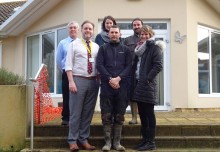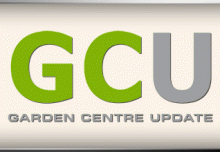 Internet masterminds are always thinking up new and exciting ways for people to communicate. The introduction of Web 2.0, a term used for describing information sharing web-based activities, means that more and more businesses are beginning to follow suit and become increasingly innovative in their ways of communicating.
Internet masterminds are always thinking up new and exciting ways for people to communicate. The introduction of Web 2.0, a term used for describing information sharing web-based activities, means that more and more businesses are beginning to follow suit and become increasingly innovative in their ways of communicating.
Web 2.0 is the collective word for a range of internet based technology, information sharing and design, which has led to a whole host of new forms of communication on the web, including the rise of social networking and blogging. Web experts are constantly creating new communication concepts, meaning additions to the Web 2.0 model are frequent.
Your company’s website is an important tool in harnessing new media. If you don’t have one, it is an accessible platform for potential and existing customers to find out about your business in terms of what you do and what you can provide. If you already do have one the following information could be useful.
The website should tell your customer exactly what you do, what product/service you provide, where you are and how to contact you. Creating a section on the site for news and uploading recent news releases is an excellent way for customers and the media to find out about your company’s developments, promotions, new products, opening times, important dates and changes to the team.
Search engine optimisation or SEO is a simple way to make sure your website is easily accessible on the web. Make sure you have included all the possible keywords that define what your business is about, where you are situated and the products that you provide. If you are not sure how to do this, speak to your website’s designer who will be able to help you out.
If your website is fully optimised, you will see an increase in hits to the site and users will be able to find you more easily when using search engines. Alternatively a service called pay per click has proved helpful to a lot of businesses, which as the name suggests carries a cost.
Pay per click or “sponsored links” are paid-for keyword links that appear highlighted at the top of an internet search. Each time a link is selected the advertiser has to pay a fee, which can be as little as £5.00 per month or more, depending on how much you wish to spend. Using this method means you are able to monitor activity on the site and make it stand out on a search engine.
Blogging on either your own website or on related gardening sites can be helpful. If you already have a section on your website for blogging that’s a start, you can write about useful hints and tips for your customers, give them a reason to read your blog, share information about product sales and new products. If you don’t have a section on your website there are lots of different blogs related to gardening on the internet or you can create your own unique blog using a number of websites. Blogs are free to create but there may be a small charge for registering a domain name. Take a look at www.wordpress.com or www.blogger.com, where you can build your own blog.
Giving helpful advice on your website can encourage users to visit it regularly. Another way to achieve this is by creating a podcast, which is a simple mp3 file. These files can be played back through your computer or downloaded automatically to an mp3 player as an audio file.
Podcasts can be as technically advanced as you like, although the better quality the audio, the more likely it will be downloaded. If you wish to create a cast, you need to consider who it is aimed at and what kind of information will interest them. It will need to be both interesting and helpful, i.e. tips on various gardening activities, what qualities to look for in certain products or anything else that you feel your customers will find useful.
Podcasts can be created by recording into your own pc using a headset, microphone and recording software. Alternatively you could discuss possible opportunities with a recording studio that will be able to produce a high quality audio and include extras such as music and effects.
If you regularly update your website with news then RSS Feeds are an accessible medium for distributing your news. Users of websites can subscribe to an RSS feed by downloading the appropriate reader software and clicking on your feed. They will then have access to updated content on your site such as blog entries, podcasts and recent news.
RSS feeds can be a little tricky to create but there is a wealth of helpful information on the internet that can direct you, step by step on how to create a feed.
The concept of new media can seem quite daunting if you are not familiar with the items I have mentioned in this article. You will notice that increasingly businesses are using podcasts, blogs and RSS Feeds to generate interest. It is important that businesses move forward with technology and rethink the way they communicate with their customers. There is plenty of really helpful information available on the web to assist you in creating each one of the concepts I have mentioned, opening up a range of exciting opportunities for large and small businesses alike.
Checklist:
- Research the new methods of communication mentioned in the article
- Identify which ones you feel would work for your business
- Research other businesses that are using these methods
Postscript: I am enormously grateful to my colleague Gemma Sharpe for her help in compiling this article. Gemma is responsible for new media in our business.


